Small businesses work hard to stay afloat. In fact, they work so hard, they barely have time to learn about marketing strategies that could vastly increase the amount of customers they receive.
Online review marketing is one of those strategies.
In this guide, we want to share everything you need to know about online reviews.
Here are the topics we’ll be covering, so feel free to jump around:
- What are online reviews?
- Which online review sites should you focus on?
- How to manage your online reputation
- How to get more reviews
- 4 ways to include online reviews in your marketing strategy
What are Online Reviews?
Online reviews are feedback and opinions customers make about your business in public digital spaces.
You’ve probably seen them in one format or another over the years. In fact, some of the most popular online platforms we use on a day-to-day basis, including Google and Facebook, host online reviews.
Other review platforms you may have used or heard of include Yelp, Tripadvisor, Trustpilot, ConsumerAffairs and Foursquare.
Online reviews happen whether you actively work on your online presence or not. This is because review platforms are completely crowdsourced. Some platforms, like Google, use intelligent AI systems to create local listings automatically. Other platforms allow customers to add listings for businesses they want to review.
It’s for this reason that you cannot simply turn reviews off in an attempt to safeguard your business’ reputation or save them for when you’re ready to put more effort into an online marketing strategy.
Because most review platforms are optimized for traditional brick-and-mortar businesses, the use of online reviews and online reputation management is most effective for local businesses.
However, some platforms target online businesses. This is the case for G2, which targets business software and services.
Finally, because online reviews operate independently from you, customers have no filter. Some reviews will be positive. Others, well, not so positive.
It’s your job as a business owner or marketing manager to maintain your online reputation by managing your business’ reviews properly.
Why should you pay attention to online reviews?
If you’re a traditional business that operates offline, you’ll find online reviews especially important for one simple reason: local SEO.
Local SEO is a subset of search engine optimization that determines how well you rank for search queries that target local businesses.
Enter “italian restaurants” or “affordable auto shops” into Google, and you’ll find what Google calls a “knowledge panel” that contains a map and list of local businesses related to your search query.
Take a second to enter a search query related to your own business to see how well you rank in local search.
Just like regular SEO, local search has its own list of ranking factors, online reviews being one of the most prominent. Even if you make it to #1 for local search queries, your average rating, whether or not you respond to reviews, and how you respond to reviews all have the power to attract or deter new customers.
But don’t take our word for it. Check out these real-world stats on online reviews to get a sense of their importance in local SEO marketing.
94% of consumers report being influenced by online reviews
94% of consumers avoided a business after reading a bad review, according to a report by ReviewTrackers.
Plus, 94% of consumers say they’re more likely to use businesses that have good reviews, according to BrightLocal.
This proves how important reviews are for your business and why you should pay attention to them. It also demonstrates that positive and negative reviews are equally important, though you should treat them differently. More on this later.
For now, check out a few additional stats that emphasize the importance of paying attention to the reviews your business receives:
- 70% of consumers use rating filters with most choosing to only show businesses with 4 stars or higher. – ReviewTrackers
- As few as 48% of consumers would consider using a business with an average star-rating that’s less than 4. – BrightLocal
87% of consumers read online reviews for local businesses in 2020
This stat is also from BrightLocal.
They also found that 93% of consumers searched online for local businesses, as opposed to newspapers, local magazines or word of mouth. Of that number, 34% searched every day while 73% searched weekly.
These are additional signs of how important it is for you to manage your profiles in whatever way you can, such as claiming your local business listings online.
81% of Americans rely on their own research
According to a study by the Pew Research Center, 81% of Americans rely on their own research when making major decisions rather than relying on advice from family and friends or professionals.
This means that most Americans are more likely to research your business by looking it up online rather than simply going straight to your website after being referred.
Plus, a separate study by the Pew Research Center found that over 50% of Americans aged 18-49, the age bracket of individuals most likely to make purchases, check online reviews before buying new items.
Consumers are more anxious to eat or shop locally in a post-pandemic world
According to a report by PowerReviews, review interactions are up 50% than what they were before the pandemic hit.
Review interactions include actions like looking up businesses online, filtering reviews and clicking “expand” to read reviews in full.
If ever there was a time to start managing your online reputation, it’s now.
Which Online Review Sites Should You Focus On?
We’ll get to the web’s preferred review platforms in a second. For now, take a look at this quick round-up of 14 popular platforms consumers use to leave reviews:
- Google – The largest and most accessible review platform. Optimized for local businesses.
- Facebook – Facebook is one of the largest social media platforms on the web, and they own Instagram as well. The platform has a rating system set up where Facebook users can rate businesses.
- Yelp – One of the largest review platforms for local businesses as well as the former king of reviews before Google took over.
- Tripadvisor – Review platform for businesses related to travel, such as hotels, restaurants and attractions.
- Foursquare – Review platform for restaurants, attractions, shops, coffee shops and nightclubs.
- Trustpilot – One of the largest review sites that caters to online and offline businesses alike.
- G2 – This platform hosts reviews for business software and services, specifically digital and IT-related services.
- Capterra – Review platform designed exclusively for software and SaaS companies.
- Better Business Bureau – The BBB is a nonprofit organization that grades businesses on how honest and conscientious they are about customer health, safety and satisfaction. The BBB was founded in 1912, making it the oldest platform on this list. With the digital age now here, customers can now leave reviews on the same pages they use to view business’ grades. They can also read each business’ replies.
- Yellow Pages – Before the internet, American citizens were able to look up businesses for nearly any industry in their area in a big yellow phone book accurately called the “yellow pages.” The company that distributed these books has adapted to the digital age flawlessly, so much so that it now hosts business reviews on its site.
- Yahoo Local Listings – Yahoo may not have gotten as big as its competitor Google, but its search engine still contains much of the same information. This includes business listings, which, in turn, includes online reviews.
- Manta – A smaller review platform for restaurants and service-based local businesses.
- Angi – Angi, formerly Angie’s List, is a platform that connects customers with service-based local businesses, such as plumbers, gardeners, etc. Customers can rate these types of businesses on this platform as well.
- Glassdoor – Glassdoor is a different type of review site. This one lets employees rate their employers and list their salaries. Consumers are more socially and politically aware these days and may choose to take their business elsewhere if they suspect your employees aren’t treated or compensated fairly.
So, which of these review sites should you use? The answer is simple: focus on platforms you already have a presence on to start with.
If your business has been in operation for at least a few months, you probably already have reviews collected on a few. You can visit each platform to confirm, but I’ve listed a few reputation management tools a little later if you want to simplify this process.
Some platforms on this list target specific types of businesses. For instance, if you’re a service-based business, consider creating a listing on Angi. If you’re a restaurant, claim your business on Tripadvisor and Foursquare in addition to the more well-known platforms.
In case you’re wondering which platforms are most popular overall, here are a few stats from ReviewTrackers:
- 88% of all reviews come from Google, Facebook, Yelp and Tripadvisor
- 63.6% of consumers are more than likely to check Google Reviews before making a purchase
- 45.15% check Yelp with Facebook and Tripadvisor coming in at third and fourth
Based on these findings, it’s clear that Google should be your number one priority, especially if you’re a small business with a limited amount of time to spare for reputation management.
Why are Google Reviews so influential?
Google is the most widely used search engine on the net by a very large margin. According to Statista, Google has a market share of over 87% on desktop and 93% on mobile.
For comparison’s sake, the next biggest market share is Bing with over 6% on desktop and DuckDuckGo with over 2% on mobile.
The reason for this is simple, and it probably won’t surprise you. Google’s parent company Alphabet is one of the largest corporations in the world. It has a market value of over $1 trillion and brings in over $180 billion in revenue per annum.
It owns the Google Chrome browser and the Android mobile operating system. Naturally, millions of users have Google’s search engine within reach for this very reason.
Plus, Google paid Apple, their biggest competitor in the smartphone industry, $15 billion in 2021 to remain the default search engine on iPhone, iPad and Mac devices.
Google has a similar deal with Mozilla, their biggest browser competitor on Windows and Android devices.
Once you learn just how much of an influence Google has in the search engine market, it’s not hard to understand just how easily they’ve dominated the review industry.
Google’s probably available to you as soon as you open your device. Input a local search term, and you’ll find reviews submitted to Google before Facebook, Yelp and Tripadvisor come up.
Does that mean you should focus all of your efforts on Google? Not necessarily.
The stats reported above were collected from a large, broad number of reviews. You may find your own customer base is more active on Yelp and Facebook than ReviewTrackers and BrightLocal report.
Again, your best bet is to do research on review platforms related to your niche to determine where your customers are most active.
How to Manage Your Online Reputation
Your first step in managing online reviews should be to claim your local business listings, especially on Google and Yelp. This allows you fill in missing details about your website, correct mistakes, add images and more.
Most importantly, it gives you a chance to start responding to reviews.
Why is this important? ReviewTrackers’ report found that 53% of customers expect businesses to respond to negative reviews within a week. One in three have a shorter timeframe of less than three days.
When you respond to positive reviews, you show customers who are already in like with your business how much you’d value their return.
Responding to negative reviews has a much more powerful effect. It gives you the opportunity to reconcile with a customer who probably never planned on stepping foot in your business ever again.
You also demonstrate to potential customers your willingness to own up to mistakes and attempt to correct them with individual customers. This is in opposition to businesses who only rectify wrongdoings when situations reach the media or they’re forced to by the courts.
This aspect of review marketing isn’t only applicable to dedicated review platforms. In fact, the Pew Research Center found that over 50% of adults aged 18-49 discuss companies and products on social media.
This means managing your reputation on social media can be just as important as managing your reputation on review platforms.
7 best tools for managing your online reputation
Starfish Reviews
Starfish Reviews 3.0 brought online reputation management to the plugin. This includes a Reviews tab that imports reviews from a variety of different platforms, including Google, Facebook, Yelp and Tripadvisor.
This feature also includes a View Review button for each review. This button opens the review in a new tab, allowing you to deliver responses to customers with ease.
If you’re not familiar with Starfish Reviews, it’s a WordPress plugin that allows you to generate reviews by asking customers for feedback. Version 3.0 also brought the ability to showcase reviews in individual groups called “collections.”
Other tools to help you manage your online reputation
- Google Alerts – A free tool by Google. Receive alerts via email anytime someone mentions your chosen keywords, such as your brand name, on the web.
- ReviewTrackers – Manage your online reputation and manage reviews efficiently.
- GradeUs – Monitor and manage reviews from dozens of review platforms, including Google, Facebook, Yelp and Tripadvisor.
- BrightLocal – An all-in-one local SEO management tool that includes review management.
- Awario – An effective social media listening tool that helps you monitor mentions on social media.
- Brand24 – A dedicated social listening tool that allows you to monitor mentions on social media.
Not mentioned are social media marketing tools, many of which come with social media monitoring and the ability to manage your social media inbox in one place.
These include tools like Agorapulse, Sprout Social, PromoRepublic and Iconosquare.
How to respond to online reviews
Here’s your first objective for managing your reputation online: claim your local business listings.
If your business is already on Google, follow these steps to claim it:
- Search for your business on Google Maps.
- View your listing, and look for a link that says “Claim This Business” or “Own This Business?,” then click it.
- Click Manage Now on the screen you’re redirected to.
- Choose a way to verify your business, and follow the on-screen instructions. You’ll likely just have to input your phone number, then enter the code Google texts you.
This process gets a little complicated if someone has already claimed your business. You’ll need to use Google’s Find and Manage Your Business page, then request access from whomever claimed it.
You can also use this page to add your business if you can’t find it on Google.
The only major issue you’ll encounter with this process is if whomever claimed your business refuses to hand over ownership. You’ll need to get in touch with the Google My Business support team and fight it.
Read our guide on claiming your local business listings for help on claiming your business on Facebook and Yelp.
How not to respond to online reviews
Once you’ve claimed all of your business listings or created them if they didn’t exist, you can get to work on responding to reviews.
The number one thing you want to avoid when responding to reviews, whether they’re positive or negative, is the use of canned responses.
Remember, reviews are public and open for anyone to read. A good way to tick disgruntled customers off even more is by delivering the same response to their concerns word for word as you did with other customers.
You can use templates, but they should be used as guidance for how to structure your review and include the kinds of things you should say. They should not tell you exactly what to say.
How to respond to positive reviews
Let’s start with responding to positive reviews.
If you don’t have a lot of reviews, we recommend replying to all of them.
If you’re overwhelmed by the number of reviews you have, prioritize positive reviews that are 4 stars or higher and thorough. These types of reviews have more content for you to base your reply on.
Start by personalizing your reply. Most reviews have their authors’ names attached to them. Greet your reviewer by name with a friendly hello.
Next, thank them, both for taking the time to leave a review and for leaving such a detailed positive review. Let them know how grateful you are for their business and thoughtful assessment.
Include details they gave in their review in your next section. For instance, if they included a picture, compliment their style, and provide a little fact or “inside scoop” about the product/part of your location they shared in the image.
Be sure to use keywords here. Including certain words in reviews and your replies to reviews can help boost local SEO rankings.
For example, if customers search “sashimi near me” and a lot of your reviews mention your sashimi dish, you’re more likely to rank higher for “sashimi near me” in your area.
Next, don’t shy away from tackling issues your customer brings up in positive reviews. Again, owning up to your mistakes is a powerful marketing tactic too few businesses use. Not to mention you’ll be able to maintain your integrity even when you mess up.
Include related promotional offers if applicable after that. Only do so if the offer directly relates to the dish, product or service your customer had at your business.
Lastly, conclude your response with a soft call to action and friendly send off.
Here’s an example (from a fictional auto shop) of all of this put together:
“Hi Rick,
Thank you for taking the time to leave a response about the service you received at our shop! I’m glad you had a great experience and decided to share it with us.
Your passenger side door looks fantastic! Also, love the new color you picked out for the body. I’ve been here three years, and we’ve never had anyone request that shade!
I’m sorry the repair took as long as it did. We’re working on expanding our supplier list to avoid these issues in the future.
Just a heads up, we’re running a special promotion on car washes in a few weeks. Be sure to swing by so you can keep that new paint job looking fresh!
You can join our email list so you don’t forget. We’ll remind you when the promotion goes live.
Anyway, thanks, again. Enjoy the ride!
– Marcus”
How to respond to negative reviews
Positive reviews don’t have the same make-or-break impact that negative reviews have on your business. Therefore, it doesn’t really matter who responds to these reviews so long as you’re responding to them.
Negative reviews, on the other hand, are quite different. You’ve already lost the author of the review as a customer. If you don’t respond to these reviews publicly and properly, you may wind up losing potential customers as well.
As such, make sure whomever responds to customers has some kind of seniority in the business. This should be the owner if you’re a small business. Otherwise, your heads of marketing or customer service will do just fine.
Just like positive reviews, your first step in responding to negative reviews should be to look for reviews that are thorough. Always prioritize newer reviews as well.
If you come across reviews that are simple 1 stars with no response or something along the lines of “this place sucks,” start the conversation with a simple, “Hey [reviewer name], please tell us about your experience. We’re always looking for ways to improve.”
The first part of your response should be similar to the way I recommend structuring your responses to positive reviews:
- Personalize your reply by adding the reviewer’s name.
- Thank them for responding.
- Own up to your mistakes without giving excuses.
Let’s talk about that “without giving excuses” bit.
Instead of immediately following your acknowledgement of where your business messed up with an explanation of how the notorious event occurred, let your customer know about the changes your business is going to make to prevent it from ever happening again.
If you’ve already addressed the problem, such as firing a temperamental employee with poor customer service skills, let them know as well.
Next, attempt to make things right with your customer. Here’s how to respond depending on the severity of the situation:
- Low – Invite your customer to give your business another chance, and give them an exclusive discount or offer.
- Medium – Invite your customer to a one-on-one conversation with management or even the business owner.
- High – Offer to compensate your customer for the amount of their service as well as any damage that was done to their property.
Should you ever give your side of the story without offering reconciliation? Certainly! Your business deserves the same amount of respect as your customers do.
If you know claims a reviewer makes are false or if they’re embellishing a few details, say something. Always be respectful in your response, and if you did make mistakes, again, own up to them.
However, as professionally as possible, give your side of the story and explain which claims are false. Ultimately, it’ll be up to potential customers to decide who’s right, but at least you gave your case.
How to Get More Online Reviews
According to BrightLocal, 86% of consumers only pay attention to reviews written in the last three months.
Of those consumers, 73% only check reviews left in the last month, and of those consumers, 50% only check reviews left in the last week.
Customers don’t want to know how your business performed in the past. They want to know what kind of service you’re providing now.
So, yes, while receiving 4 and 5-star reviews is important, and you should be proud of your business for achieving a higher average star rating, don’t discount the importance of receiving newer reviews.
What’s the most effective way to get more reviews? Ask!
Starfish Reviews is designed for this very task.
It enables you to set up funnels in which customers are sent down different paths depending on whether they provide positive or negative feedback for your business.
When they provide positive feedback, redirect them to a page that asks them to leave a review at specific destinations.
Here are destinations you can add with icons included:
- Yelp
- Tripadvisor
- Amazon
- Audible
- iTunes
- App Store
- Google Play
- Foursquare
- WordPress
- Etsy
If you receive negative responses, ask customers to provide feedback or get in touch with your support staff.
Starish Reviews lets you set up a contact form in this case. Additional fields you can add alongside the message box are Name, Email and Phone. You can also choose which fields should be required.
One of the best features of this aspect of Starfish Reviews is the ability to disable review gating.
This nifty little setting doesn’t hide links to your review destinations when customers give negative responses. It’s the perfect feature for those unsure about the ethics of asking for reviews.
Additional ways to ask for reviews
The way you ask for reviews with Starfish Reviews is called the “pre-screening technique.” It allows you to gauge your customers’ responses before encouraging them to visit your review platforms.
The great thing about this technique is you can do it in person as well. Have whomever rings customers up ask something along the lines of “how was your experience shopping/working/dining with us today?”
If your customer gives a positive response, ask them to leave you a review on your preferred review platform or even hand them a small flyer that asks for them to leave reviews on their favorite platforms.
You could even include a discount on the reverse side of this flyer to sweeten the deal.
If your customer gives a negative response, ask them what went wrong or even offer to have them talk with the shift’s supervisor or manager.
You can use this technique when you offer customers support as well. Most helpdesk software applications allow you to set up feedback surveys customers can use to rate their experience with your business’ support department.
If customers provide positive responses, ask them to leave reviews on your chosen platforms.
Lastly, you can ask customers for reviews via email.
This works in the same way Starfish Reviews works. Ask customers if they have a positive or negative opinion of your business.
Include two links for each response type in the email. The positive link should lead to a plain landing page asking your customer to provide a review on your preferred review platforms. Many page builders, like Elementor, come with “blank page” templates that remove your site’s header and footer.
The negative link should lead to a similar blank page, only this one should contain a contact form and ways to get in touch with support.
When should you ask for reviews?
The most important aspect of the pre-screening technique is the fact that it doesn’t ask for reviews right away. Let customers get familiar with your business or product before you ask for their feedback.
A good example is ecommerce businesses. Too often we’re hit with “please rate us on Google” messages minutes or even seconds after completing orders.
The problem with this is customers haven’t had the chance to fully experience what it’s like receiving service from you. There are multiple things to consider while a customer waits for their order:
- Will the order get their on time?
- Are the products damaged when they do?
- Did your customer receive what they ordered?
- Did you honor their return request?
If you rectify these issues properly, you may just receive 5-star reviews for above-and-beyond customer service in spite of mishaps.
We’ve covered this topic at length on our blog. All of these posts contain tips on optimizing the way you ask for reviews:
How to Create the Perfect Facebook Link to Ask for Reviews & Recommendations
How to Get the Perfect Link to Ask for Google Reviews
How to Get More Yelp Reviews without Violating Yelp’s Review Policy
4 Ways to Include Online Reviews in Your Marketing Strategy
As you can see, getting more reviews on a regular basis is just as important as responding to them is.
In fact, 63% of consumers say that at least one company they reviewed never responded, according to ReviewTrackers.
45% of consumers say they’re more likely to use businesses that respond to negative reviews.
It’s for these reasons that responding to positive and negative reviews alike should be a key part of your marketing strategy.
However, there are plenty of other ways to include online reviews in your marketing strategy.
1. Showcase your reviews
Reviews are an effective form of social proof. Social proof is a psychological and social phenomenon in which people mimic the behavior of others as a way to correct their own behavior in certain situations.
When customers see how positively other customers have reviewed products or services, they’re more likely to purchase those products or partake in those services as well.
You can showcase reviews on your website as a form of social proof to encourage potential customers to complete your calls to action.
Starfish Reviews has this feature. It’s called “Collections,” and it pairs with the Reviews feature mentioned earlier.
The feature allows you to group several reviews together in “collections,” then showcase them anywhere on your site with shortcodes.
Testimonials work as well, which is an upcoming feature planned for Starfish Reviews.
2. Make reviews accessible
This method ties back into the importance of claiming your business online. It’s important that your business is listed on the four most popular review platforms: Google, Facebook, Yelp and Tripadvisor.
This way, customers can find your business on whatever platform(s) they prefer without having to do any digging.
Build up your profile on each platform. Also, do your research, and learn everything they’re about.
Learning the ins and outs of Google My Business is most important if you’re a local business. Facebook is great for all types of businesses.
3. Recruit affiliates and brand ambassadors
Like I said earlier, mentions on social media are just as important as receiving reviews on review platforms.
When you monitor your mentions, you may discover a Facebook post, tweet or Instagram post that has a decent amount of likes, shares and comments.
You may want to implement an affiliate program and recruit brand ambassadors into your online review marketing strategy for this reason.
Whenever affiliates or ambassadors mention your product or service on social media or in their content, they can use their affiliate or sponsorship links to recommend your business.
This boosts brand awareness and increases the number of sales you receive. Plus, affiliate marketing often costs less than advertising since you don’t payout until your affiliates receive sales.
AffIliateWP is a fantastic plugin to use if you want to manage an affiliate program from your WordPress site. Ambassador can help you turn your happiest customers into brand advocates.
4. Turn negative reviews into positive marketing
Every time you respond to a negative review properly, you show potential customers your willingness to admit fault and correct your mistakes.
There are actually a few additional ways you can turn negative reviews into marketing opportunities.
If you’ve received a lot of negative reviews recently or a bit of bad press, implement changes to your business to correct your mistakes. Then, use those changes as ad campaigns.
It’s important that you announce these changes after you’ve implemented them. Too many businesses try to rectify the situation by explaining how they’ll change at a time when customers are more aggravated than they’ve ever been.
Second, use negative reviews as a way to spot instances in which the way you market your business falls short.
For example, if your return policy is only seven days, make sure that’s advertised prominently to avoid angering customers who are likely accustomed to 14 and 30-day return policies.
Lastly, use the same technique to spot shortcomings in the way you handle customer service.
If you receive negative reviews you suspect are a result of customers misusing your product or service, create a knowledge base on your website. Then, fill this section of your website with helpful tutorials.
You should also examine various aspects of your business to see if there are any improvements you can make to change the service customers receive for the better.
Things like offering improved training for your customer service, improving your product, improving the space in which you do business and similar changes can really do a lot to help you avoid negative reviews in the future.
Final Thoughts
Online review marketing and online reputation management are among the most effective strategies for businesses. This is especially true for local businesses looking to improve their rankings in local SEO.
I know you have a lot to manage in your business. I know you’re pressed for time.
However, if you don’t start dedicating even a little bit of that time into responding to reviews or asking customers to provide feedback, you may find your business overshadowed by the competition.
By now, you know all about how Starfish Reviews can help you collect reviews and use them as social proof. We even have a nifty call to action right there ↓.
We also have plenty of guides on our blog if you need additional help. We regularly publish new content on review marketing and online reputation management, so stay tuned for more tips.
Good luck on your review ventures!


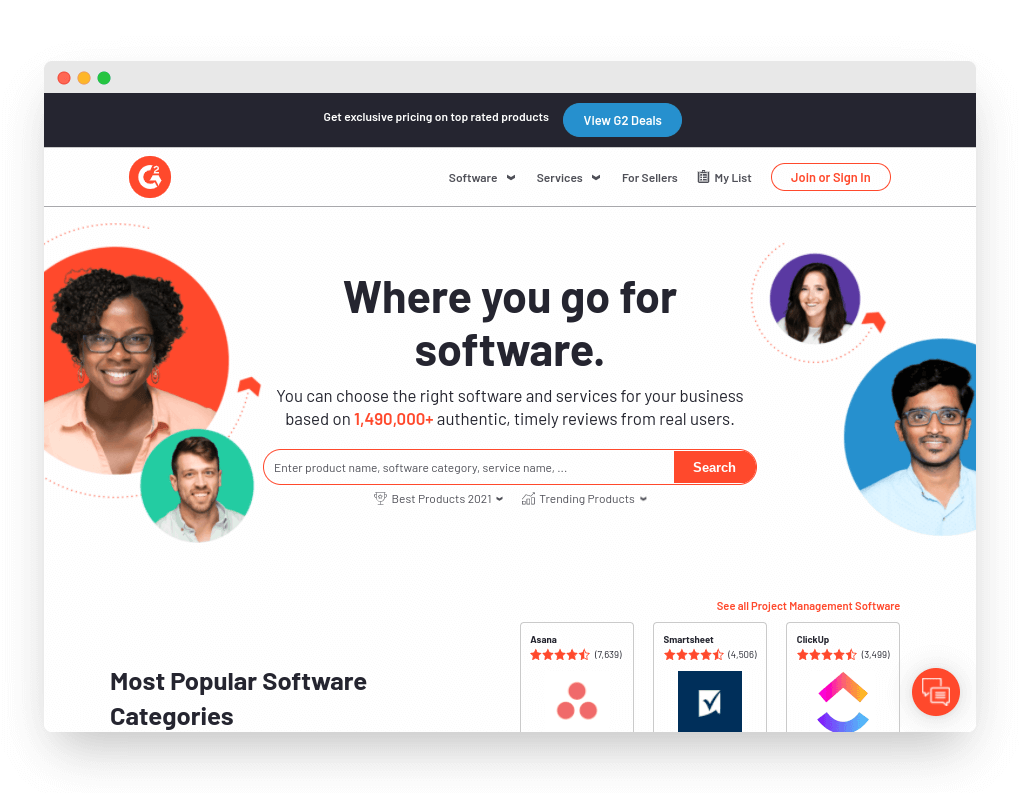
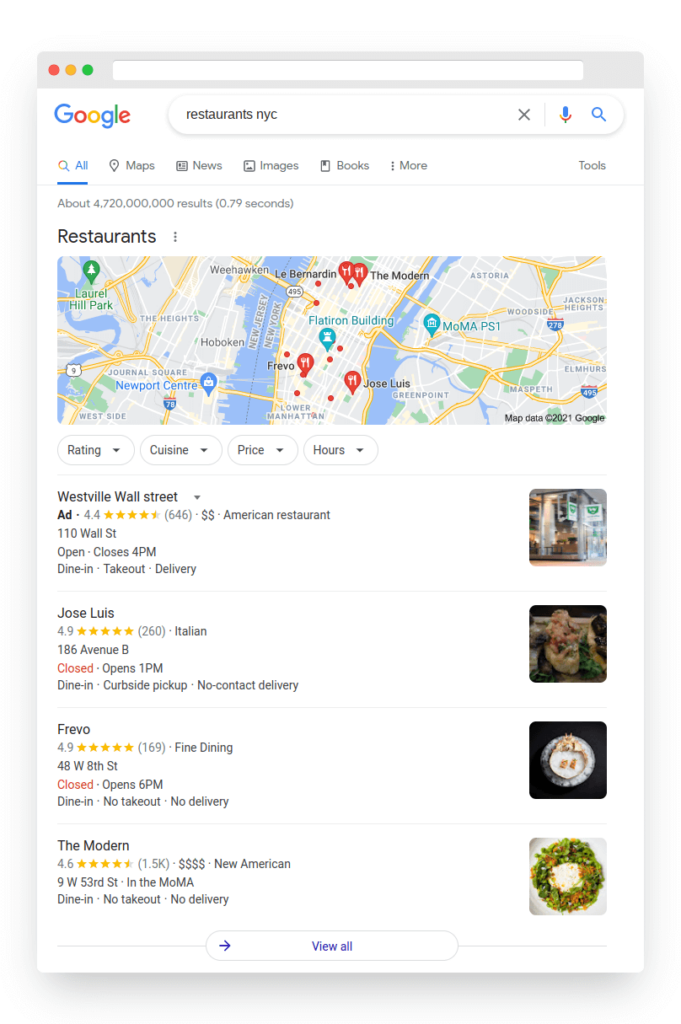
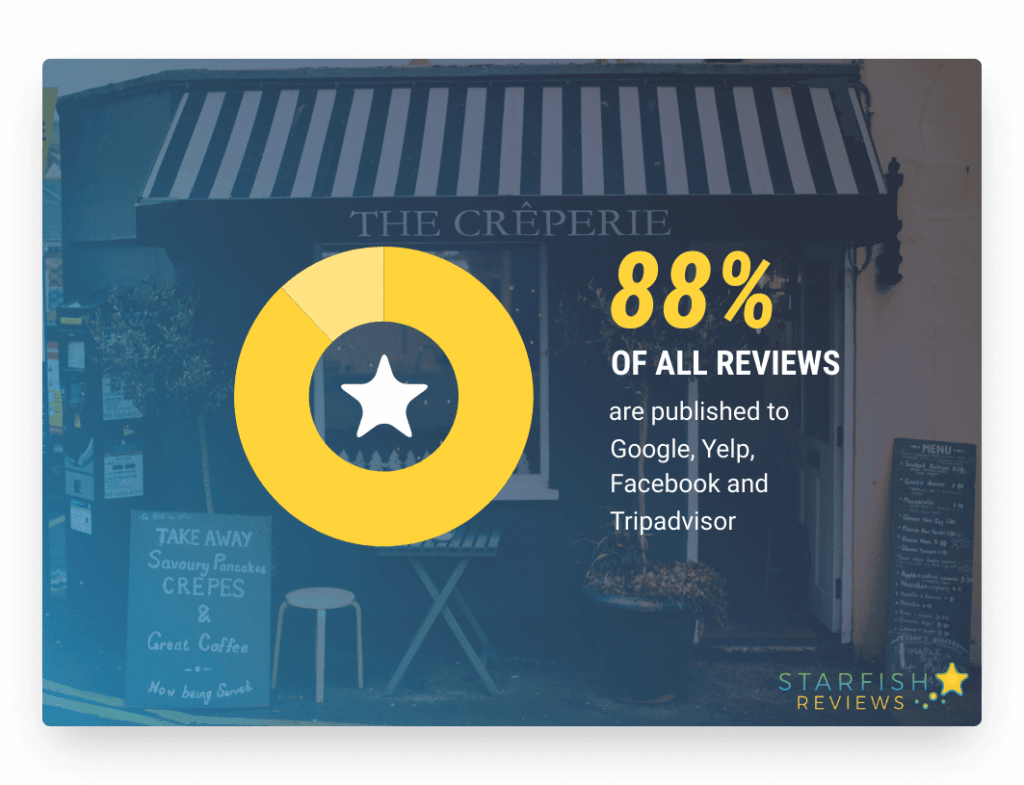
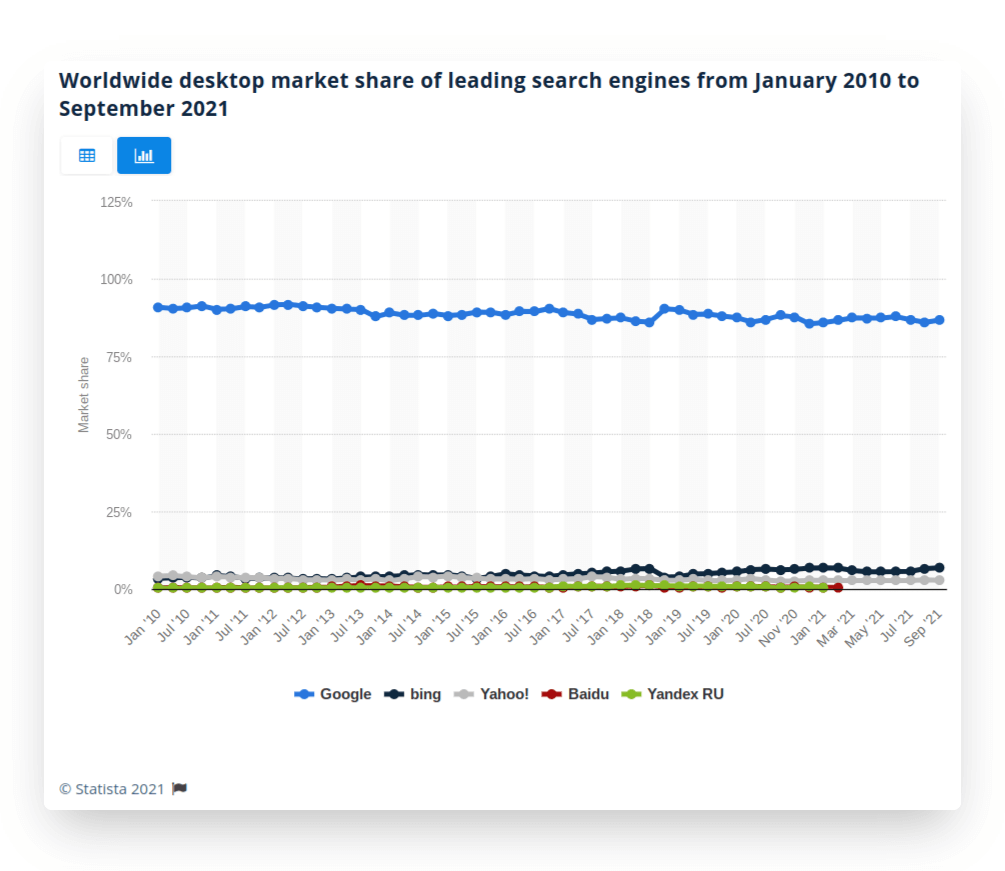
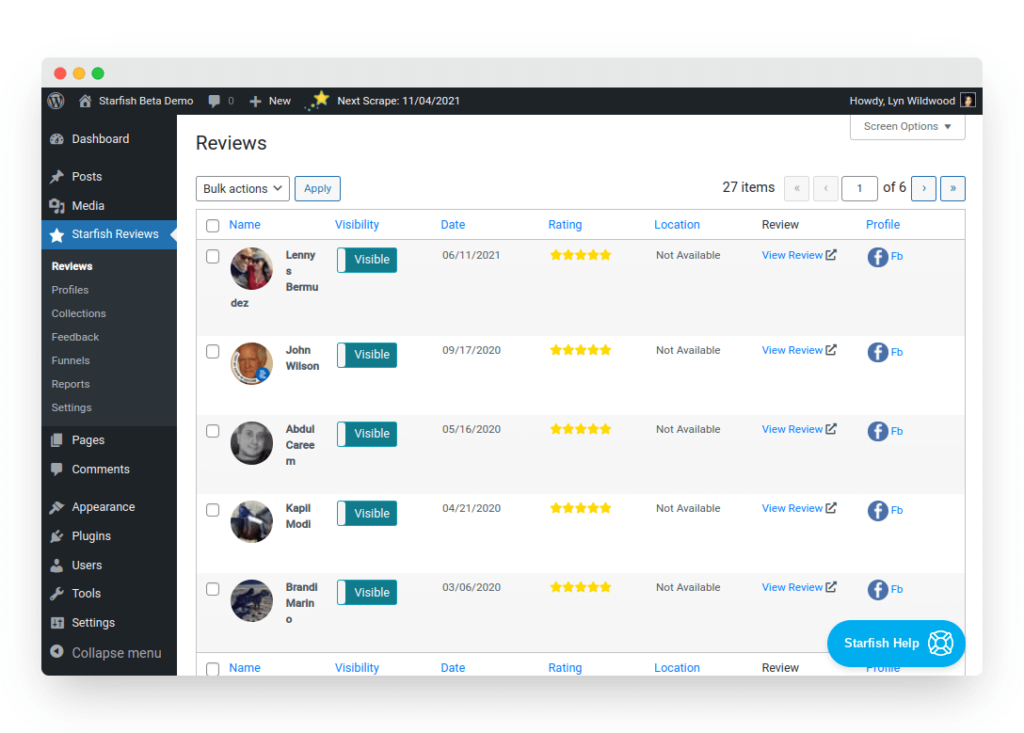
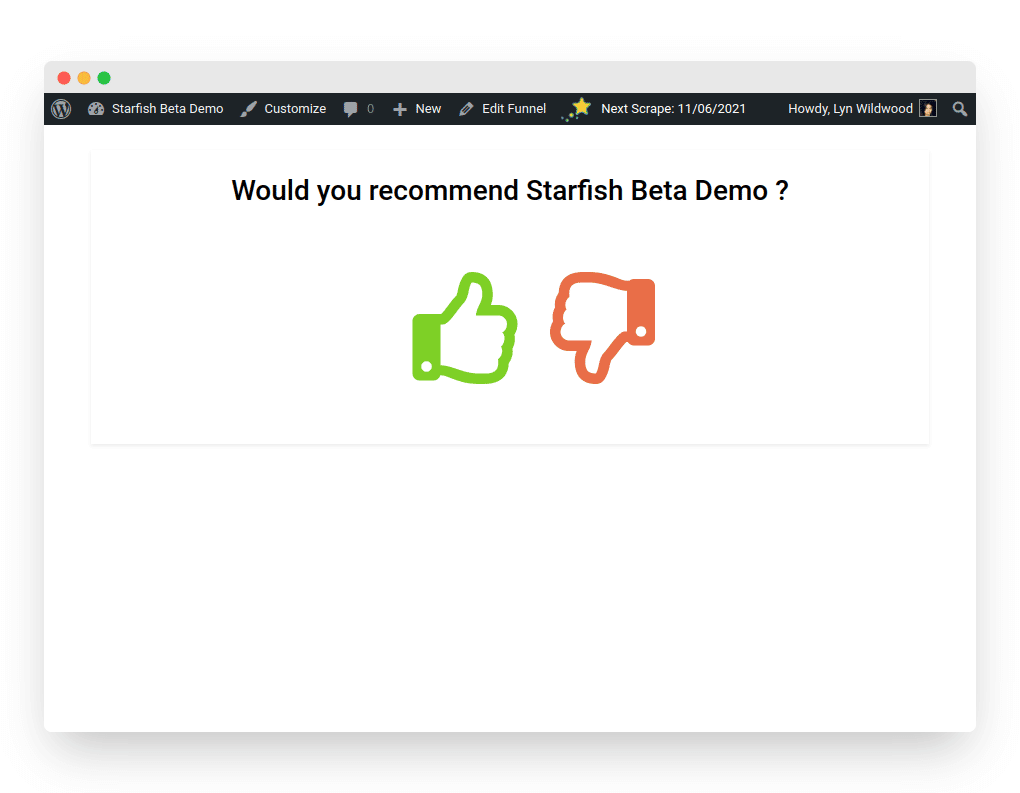
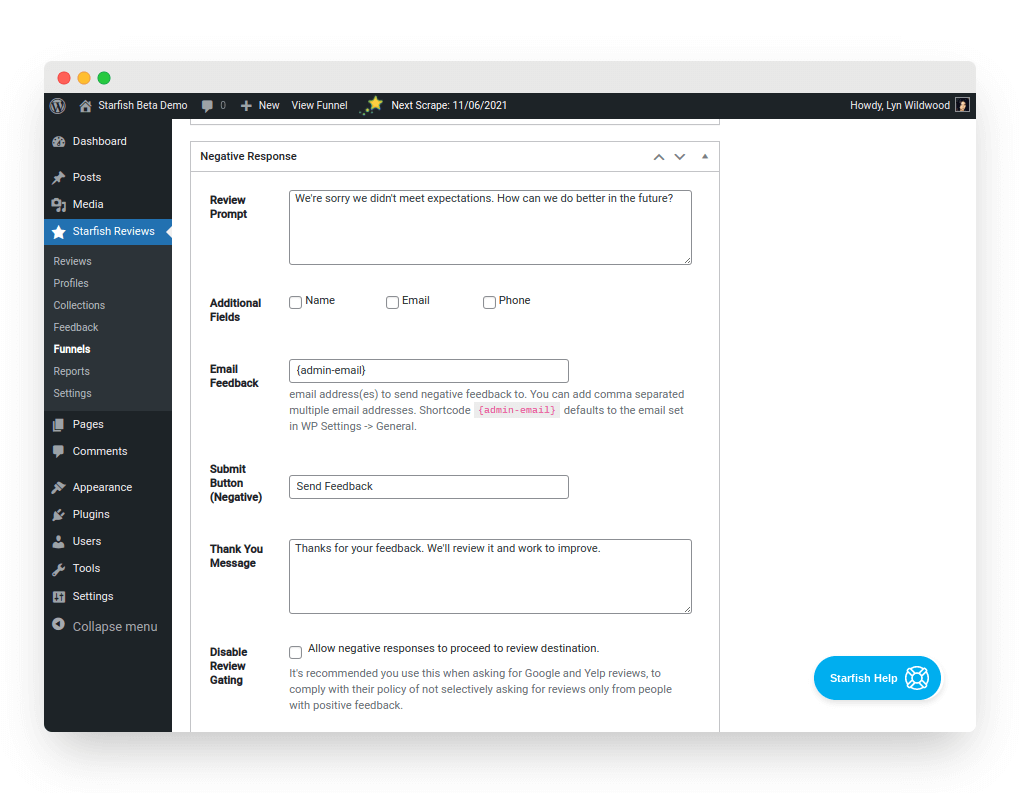
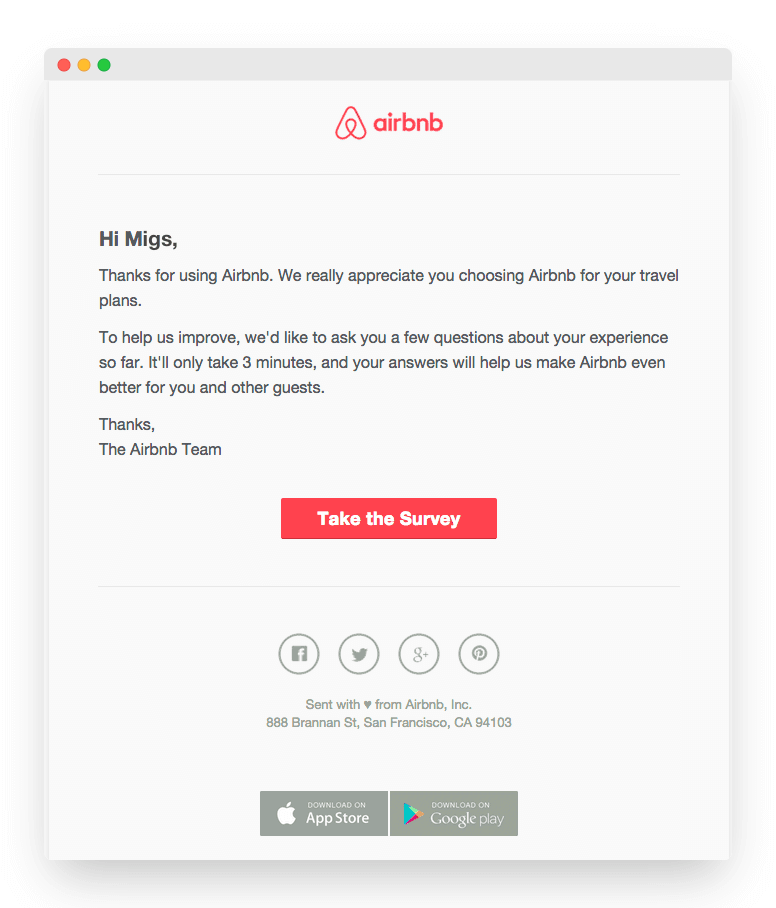
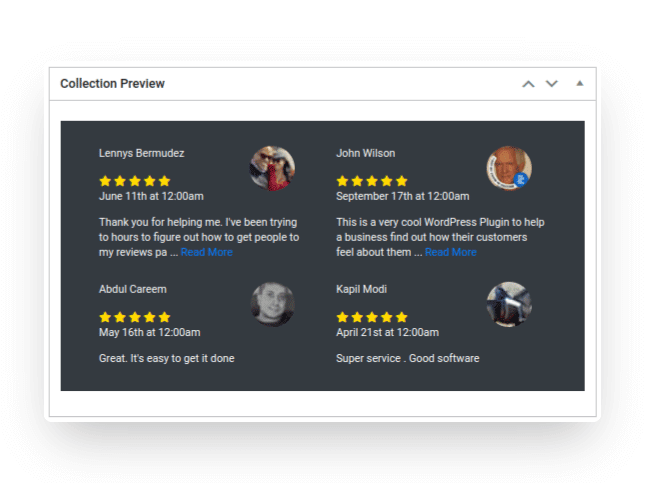




0 Comments